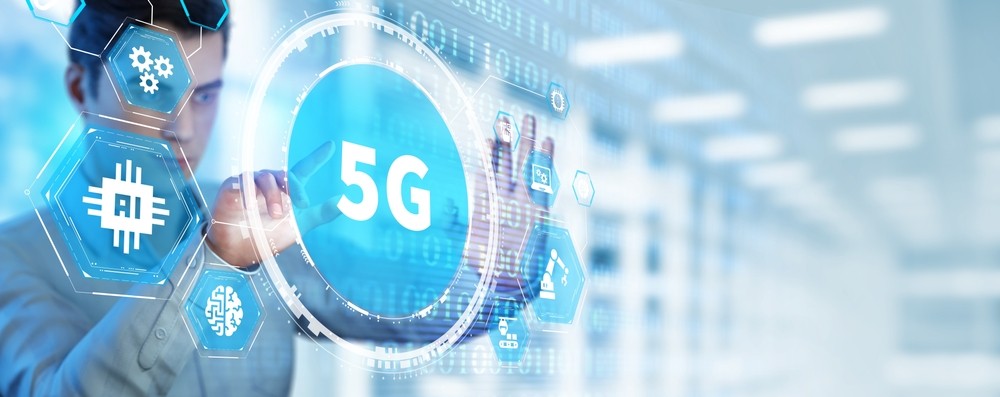As the 5G IoT ecosystem begins to mature , and with IoT connected devices growing exponentially in tandem (expected to reach 29.42 billion in 2030, doubling from 2023). It’s interesting to see the full potential for smarter cities, autonomous transportation, precision agriculture and other innovations starting to be realised.
But what may not be an immediately obvious benefit is the role that this growing network will play in sustainability. In fact, 5G has been wrongly perceived as an energy-intensive standard with an excessive carbon footprint, when the opposite is in fact true. 5G has the ability to drive a positive environmental impact and reshape industries worldwide, and in a number of ways that industries may not expect.
Cutting down on carbon emissions
5G in reality doesn’t require any more power than its predecessor. A blog by Ericsson from this year reports that by design, a 5G system is able to carry ten times the volume of data traffic than 4G, but requires no extra energy to do so. It even has the capability to help reduce carbon emissions via AI-driven solutions that can enable highly efficient energy management.
Predictive maintenance and asset efficiency are the two main ways that AI-driven solutions can make a sustainable difference. Predictive maintenance involves the implementation of IoT-connected sensors - enhanced by 5G networks - in equipment such as plant machinery, wind turbines, trucks and even elevators. These allow organisations to closely monitor the status of each and complete maintenance as soon as it’s needed. By eradicating downtime, energy output is not only being increased, but operations and maintenance costs are also managed more effectively.
Even in agriculture, for example, 5G-fuelled IoT technology enables organisations to predict when crops are ready for harvesting and monitor moisture levels to determine optimal watering times. Livestock can even be monitored for various conditions, such as detecting when an animal is about to give birth, or showing signs of sickness.
These capabilities are supported by three of 5G’s key attributes that supersede what could be achieved using previous iterations of the technology. Low latency of less than 1 millisecond and rapid transfer of more than 2 Gbps enables real-time transmission of status data to analytics devices, with high connection reliability and support for densities of 1 million devices per km². This has the ability to transform whole industries including sports and entertainment, manufacturing and transportation.
Asset efficiency is the other key area for 5G. In asset control, 5G sensors can collect data that can be fed straight into analytics platforms. Leveraging other emerging technologies such as digital twins and AI, this allows automatic tweaking of almost any asset to maximise output. For example, if we apply this to a wind turbine, it can be adjusted to react faster to changing weather conditions by reversing the direction of the turbine or the orientation of the blades. 5G’s low latency is the reason that this is possible. With the growth of sensors, devices, base stations and data processing that accompanies this rollout, the sector can significantly reduce its carbon footprint.
Further underlining the energy efficiency that 5G can deliver, IoT-focused 5G technologies like NB-IoT, Cat-M, and RedCap are typically more energy-efficient than their 4G counterparts. These technologies optimise power consumption, potentially enabling devices to have longer battery lives. For instance, devices using NB-IoT and Cat-M can sometimes operate for years on a single battery charge due to their low power requirements and efficient data transmission protocols.
The creation of smart cities
5G also has sustainable benefits in urban environments. In the smart cities of the future, where millions of devices are connected and transmitting significant amounts of information, fast upload and download times, alongside low latency, are essential. 4G does not have the capacity or capability to support this vast volume of devices and data traffic. That’s why 5G, with its greater capacity and ability to support high-speed data transmission and low-latency communication, is critical for the efficient functioning of IoT networks in smart cities.
Fundamental decisions can be made from the data generated from cameras, sensors and mobile devices, such as optimising energy consumption, traffic or infrastructure and even the management of waste. For example, sensors in these environments can enable orchestrated traffic flows for greater speed and efficiency. Cars can be re-routed away from accidents to reduce delays.
Street lighting levels can also be adjusted based on traffic levels, such as off-peak times in the middle of the night, enabling energy savings. Waste bins can incorporate sensors to measure fill levels and include functions for automatic waste separation to streamline the process. In today’s hybrid working era, office buildings can adapt energy consumption based on actual usage.
A wealth of potential
5G holds a wealth of potential for driving sustainability and reducing environmental impacts across many industries, and connectivity across IoT sensors and devices can allow for unprecedented levels of monitoring, automation and optimisation. At the core of its capabilities are lower latency, real-time transmission of status data, high connection reliability and support for densities of up to millions of devices.
5G has the ability to reduce carbon emissions via predictive maintenance and asset efficiency applications, but it can also power smart cities, with examples such as smart traffic management and intelligent street light controls for energy savings. It’s clear that if implemented responsibly, this emerging standard can be a key enabler for minimising environmental footprints moving forward.





